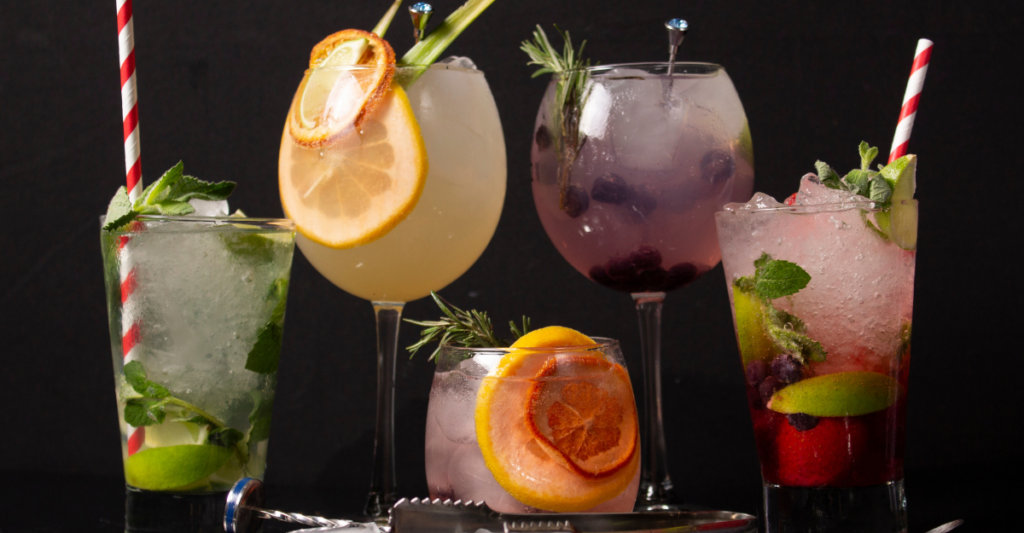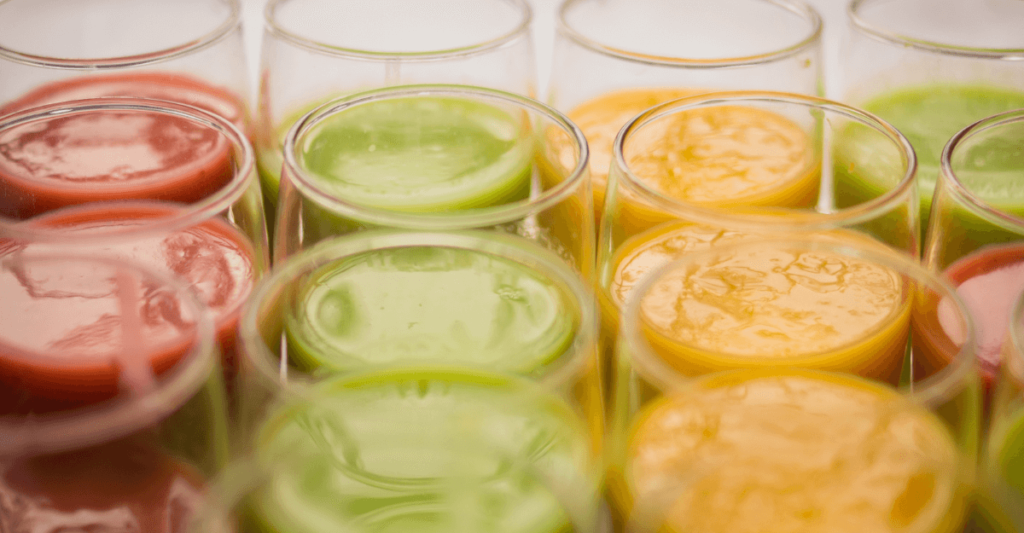Did you know that the global energy drink market is projected to reach a staggering $86 billion by 2026? In this comprehensive guide, we’ll explore the top 50 energy drinks of all time, covering the most powerful, popular, and innovative offerings on the market.
From classic Red Bull to trendy new brands, we’ll delve into the caffeine content, flavor profiles, health effects, and customer ratings of each energy drink, helping you discover the perfect pick to fuel your day.
Whether you’re a caffeine connoisseur or simply in search of a quick energy boost, this article has got you covered. We’ll dive into the history and evolution of energy drinks, uncover the most sought-after ingredients, and even explore the differences between alcoholic and non-alcoholic options.
So, brace yourself for a captivating journey through the ever-evolving world of energy beverages, where the possibilities are as limitless as the energy they provide. Also explore the benefits of energy drinks.
What Are Energy Drinks?
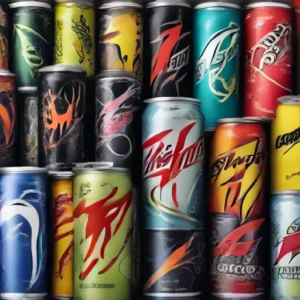
Energy drinks have become a ubiquitous part of modern life, providing a quick and convenient way for people to boost their energy levels and mental focus.
These beverages, which typically contain high concentrations of caffeine and other stimulants, have a rich history of energy drinks and continue to evolve with new formulations and innovative ingredients.
Definition of Energy Drinks
At their core, energy drinks are a type of energy drink definition that are designed to provide a surge of energy, enhance mental alertness, and improve physical performance.
They accomplish this by combining high levels of caffeine with a variety of other ingredients, such as B-vitamins, taurine, guarana, and ginseng, among others.
History and Evolution
The origins of energy drinks can be traced back to the early 20th century, with the introduction of beverages like Coca-Cola and other caffeinated concoctions.
However, the modern energy drink industry truly took off in the late 1980s with the launch of Red Bull, which is often credited as the first widely successful energy drink brand.
Since then, the history of energy drinks has been marked by a proliferation of new brands, flavors, and formulations, catering to the ever-evolving preferences and demands of consumers. Also explore the healthy alternatives of energy drinks.
Popular Ingredients
Energy drinks are typically formulated with a combination of energy drink ingredients that are designed to provide a boost of energy and mental focus. Some of the most common ingredients found in these beverages include:
- Caffeine: The primary active ingredient in energy drinks, providing a stimulant effect to increase alertness and energy levels.
- B-Vitamins: Such as B6 and B12, which can help support the body’s energy metabolism and cognitive function.
- Taurine: An amino acid that may help improve physical and mental performance.
- Guarana: A natural source of caffeine that can provide an additional energy boost.
- Ginseng: An herbal ingredient believed to have adaptogenic properties and potential cognitive benefits.
While the specific energy drink ingredients and their concentrations can vary across different brands and formulations, these are some of the most commonly found components in energy drinks.
Top 50 Energy Drinks of All Times
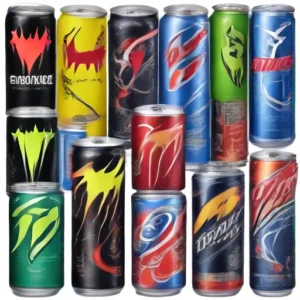
| Rank | Brand | Caffeine Content (mg) | Customer Rating |
|---|---|---|---|
| 1 | Red Bull | 80 | 4.5/5 |
| 2 | Monster Energy | 160 | 4.7/5 |
| 3 | Rockstar | 160 | 4.3/5 |
| 4 | Reign Total Body Fuel | 300 | 4.8/5 |
| 5 | Bang Energy | 300 | 4.6/5 |
Energy Drink Brands to Watch
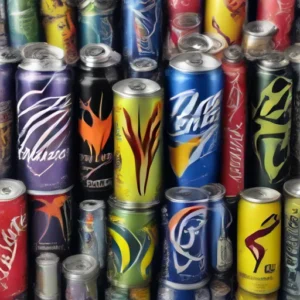
While the energy drink market is dominated by a handful of well-established brands, there is a constant influx of new and exciting players vying for a slice of the pie.
These emerging energy drink brands are making waves with their unique formulations, captivating marketing strategies, and innovative approaches to the industry.
Emerging Brands
One brand that has been generating significant buzz in the energy drink space is Celsius. With its focus on clean, naturally-sourced ingredients and a mission to promote an active, healthy lifestyle, Celsius has carved out a niche for itself among health-conscious consumers.
Another up-and-coming player is Reign Total Body Fuel, which has gained popularity for its electrifying flavors and high-performance formula designed to fuel athletic endeavors.
Innovative Flavors
In addition to the emergence of new brands, the energy drink market has also witnessed a surge of innovative flavor profiles.
Brands like Monster Energy have been pushing the boundaries with unique offerings such as their “Pacific Punch” and “Papillon” varieties, captivating consumers with unexpected taste experiences.
Similarly, Bang Energy has garnered attention for its bold and unconventional flavor combinations, including “Sour Heads” and “Radical Skadattle.”
| Emerging Energy Drink Brands | Innovative Energy Drink Flavors |
|---|---|
| Celsius | Monster Energy Pacific Punch |
| Reign Total Body Fuel | Monster Energy Papillon |
| Bang Energy Sour Heads | |
| Bang Energy Radical Skadattle |
Caffeine Content Comparison
When it comes to energy drinks, the amount of caffeine they contain is a crucial factor to consider. The caffeine content can vary significantly across different brands and formulations, catering to the diverse preferences and needs of consumers.
Whether you’re seeking a powerful boost or a more mild-mannered option, this section will dive into the world of high caffeine energy drinks and low caffeine energy drink alternatives.
High Caffeine Options
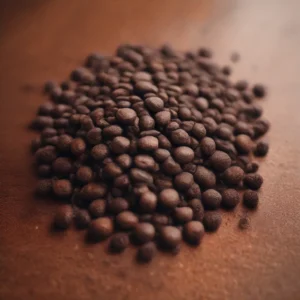
For those seeking a potent jolt of energy, there are several energy drink brands that pack a serious caffeine punch. Brands like Monster Energy, Rockstar, and Bang Energy are known for their high caffeine energy drink offerings, with some products containing upwards of 300mg of caffeine per serving.
These high-caffeine options are ideal for individuals who require an intense energy boost, whether it’s for athletic performance, late-night study sessions, or simply powering through a demanding workday.
Low Caffeine Alternatives
On the other end of the spectrum, there is a growing demand for low caffeine energy drink options, catering to consumers who are more sensitive to caffeine or simply prefer a gentler, more sustained energy boost.
Brands like MatchaDNA, Guayaki, and Olipop offer energy drink caffeine content that is significantly lower than the industry standard, often in the 50-100mg range per serving.
These lower-caffeine alternatives can provide a more balanced energy experience, without the potential jitters or crashes associated with high-caffeine options.
Ultimately, the choice between high-caffeine and low-caffeine energy drinks comes down to individual preferences, tolerance, and the specific energy needs of the consumer.
By understanding the caffeine content of various energy drink brands, you can make a more informed decision and find the perfect fit to fuel your day.
Energy Boost and Performance
As the popularity of energy drinks continues to soar, many consumers are exploring their potential benefits in boosting physical and mental performance.
From pre-workout supplements to energy drinks designed specifically for athletes, these power-packed beverages are increasingly being integrated into fitness regimens and training routines.
Pre-Workout Drinks
Pre-workout energy drinks have become a staple for fitness enthusiasts and athletes looking to optimize their training sessions.
Formulated with a blend of stimulants, such as caffeine, along with ingredients like amino acids and B-vitamins, these pre-workout drinks are designed to enhance focus, delay fatigue, and provide a surge of energy before an intense workout.
Popular pre-workout energy drink brands like Alani Nu, C4, and Optimum Nutrition have gained a loyal following among fitness-minded consumers seeking an edge in their training.
Energy Drinks for Athletes
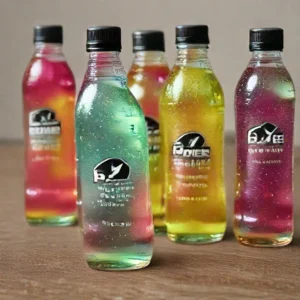
The demands of high-intensity sports and endurance activities have also driven the development of energy drinks specifically tailored for athletes.
These specialized beverages are formulated to not only provide a quick energy boost but also support hydration, muscle recovery, and overall athletic performance.
Brands like Gatorade, Powerade, and Bodyarmor have introduced energy drink variants that cater to the unique needs of professional and amateur athletes, helping them push the limits of their physical capabilities.
Whether you’re a gym-goer, a weekend warrior, or a competitive athlete, the right energy drink can be a valuable tool in your performance-enhancing arsenal.
By tapping into the power of caffeine, amino acids, and other performance-boosting ingredients, energy drinks can help you take your training and competition to new heights.
Also explore the energy drinks starting with D
Popular Brands and Customer Ratings
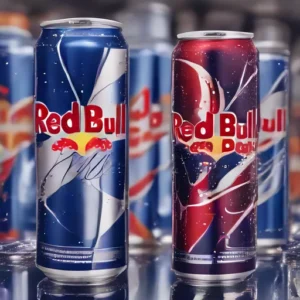
The energy drink market is a crowded and competitive landscape, with a diverse array of popular energy drink brands vying for consumer attention.
From industry stalwarts like Red Bull and Monster Energy to innovative newcomers, the best-selling energy drinks have all captivated customers with their unique formulations, bold flavors, and the promise of an energizing boost.
To better understand the dynamics of this dynamic market, let’s delve into the customer ratings that have helped cement the reputations of some of the most popular energy drink brands. By examining the factors that have contributed to their success, we can gain valuable insights into the preferences and perceptions of energy drink consumers.
Best-Selling Energy Drinks
Leading the pack in terms of best-selling energy drinks are stalwarts like Red Bull, Monster Energy, and Rockstar Energy.
These brands have established themselves as industry titans through consistent quality, innovative flavors, and effective marketing campaigns that have resonated with a broad range of consumers.
| Brand | Customer Rating (out of 5) | Best-Selling Flavors |
|---|---|---|
| Red Bull | 4.2 | Original, Sugarfree, Blue Edition |
| Monster Energy | 4.5 | Original, Absolutely Zero, Mango Loco |
| Rockstar Energy | 4.1 | Original, Punched, Tropical Punch |
| Celsius | 4.3 | Sparkling Orange, Raspberry Acai Green Tea, Peach Mango |
| Bang Energy | 4.4 | Candy Blast, Star Blast, Rainbow Unicorn |
These best-selling energy drink brands have consistently earned high customer ratings for their ability to deliver a reliable energy boost, as well as their diverse range of innovative and appealing flavors.
As the energy drink market continues to evolve, these industry leaders will undoubtedly remain at the forefront, captivating consumers with their commitment to quality and their ability to adapt to changing preferences.
Taste Profiles and Flavor Reviews
One of the most captivating aspects of the energy drink market is the diverse range of flavors and taste profiles on offer.
From classic citrus and berry notes to bold and innovative blends, energy drink manufacturers have consistently pushed the boundaries of flavor innovation to cater to the ever-evolving preferences of consumers.
Fruity and Sweet Flavors
For those seeking a more refreshing and indulgent energy boost, the fruity and sweet energy drink flavors have become increasingly popular.
Brands like Monster Energy, Red Bull, and Rockstar have released a variety of fruity energy drink flavors ranging from juicy watermelon and tropical pineapple to tangy lemon-lime and tart cherry.
These energy drink taste profiles often provide a delightful balance of sweetness and acidity, catering to those with a penchant for more fruit-forward energy drinks.
Bold and Unique Flavors
While the fruity and sweet energy drink flavors continue to captivate the masses, a growing number of energy drink enthusiasts are also drawn to the bold and unique flavors that push the boundaries of traditional energy drink taste profiles.
Brands like Bang Energy and Reign Total Body Fuel have introduced innovative energy drink flavors such as Radical Skadattle, Sour Heads, and Raging Thunder, offering an exhilarating and unapologetic taste experience that caters to the more adventurous palates.
| Energy Drink Brand | Fruity and Sweet Flavors | Bold and Unique Flavors |
|---|---|---|
| Monster Energy | – Mango Loco – Pipeline Punch – Khaotic |
– The Doctor – Lewis Hamilton – Ultra Paradise |
| Red Bull | – Red Edition (Cranberry) – Tropical Edition – Peach Edition |
– Silver Edition – Coconut Edition – Plum Edition |
| Rockstar | – Punched Guava – Pineapple Passionfruit – Tropical Punch |
– Punched Tropical Blast – Punched Blackberry – Punched Lime |
| Bang Energy | – Miami Cola – Champagne |
– Radical Skadattle – Sour Heads – Raging Thunder |
| Reign Total Body Fuel | – Melon Mania – Strawberry Sublime |
– Carnival Candy – Blueberry Burst |
Whether you’re drawn to the refreshing and indulgent fruity energy drink flavors or the bold and captivating unique energy drink flavors, the energy drink market offers a flavor profile for every taste preference.
Ingredients and Health Effects
As the energy drink market has expanded, consumers have become increasingly conscious of the ingredients and potential health implications associated with these beverages.
Understanding the various components that make up energy drinks, as well as their potential risks and benefits, is crucial for making informed decisions about their consumption.
Natural and Organic Options
In response to growing health concerns, the energy drink industry has seen the emergence of more natural and organic alternatives.
These products often feature energy drink ingredients derived from natural sources, such as green tea, yerba mate, or guarana, rather than relying solely on synthetic caffeine and other stimulants.
These natural and organic energy drinks aim to provide a more wholesome energy boost while minimizing potential health risks.
Potential Risks and Concerns
While energy drinks can provide a convenient and effective energy boost, there are also some potential health risks of energy drinks that consumers should be aware of.
Excessive consumption of caffeine and other stimulants found in these beverages can lead to side effects such as jitters, insomnia, increased heart rate, and even more serious health issues, especially for individuals with underlying medical conditions or sensitivities.
It is essential to carefully monitor one’s intake and consult with a healthcare professional to ensure the safe and responsible use of energy drinks.
Alcoholic vs. Non-Alcoholic Energy Drinks
In recent years, the energy drink market has seen the emergence of both alcoholic and non-alcoholic options, each catering to distinct consumer preferences and occasions.
Understanding the differences between these two categories is crucial for making an informed choice when it comes to fueling your day or social activities.
Alcoholic Energy Drink Brands
Alcoholic energy drinks combine the stimulating effects of caffeine and other energy-boosting ingredients with the psychoactive properties of alcohol.
These beverages cater to consumers seeking a unique blend of energy and intoxication, often marketed as a way to prolong the party or enhance social experiences.
Some of the most prominent alcoholic energy drink brands include Four Loko, Joose, and Sparks, which have gained popularity among younger demographics.
Non-Alcoholic Energy Drink Alternatives
On the other hand, non-alcoholic energy drinks focus solely on providing a surge of energy and mental alertness without the addition of alcohol.
These beverages are often consumed for their ability to boost physical and cognitive performance, improve focus, and enhance overall energy levels.
Brands like Red Bull, Monster Energy, and Rockstar have become household names in the energy drink industry, catering to a wide range of consumers seeking a caffeine-fueled pick-me-up.
It’s important to note that while alcoholic energy drinks may provide a unique experience, they can also carry significant health risks, including increased heart rate, dehydration, and the potential for alcohol poisoning. Non-alcoholic energy drinks, while not without their own concerns, generally offer a safer alternative for those seeking an energy boost without the added complications of alcohol consumption.
| Characteristic | Alcoholic Energy Drinks | Non-Alcoholic Energy Drinks |
|---|---|---|
| Ingredients | Caffeine, stimulants, alcohol | Caffeine, stimulants, no alcohol |
| Primary Purpose | Provide energy and intoxication | Provide energy and mental focus |
| Target Audience | Younger demographics seeking a unique party experience | Consumers of all ages seeking an energy boost |
| Health Risks | Increased heart rate, dehydration, potential for alcohol poisoning | Caffeine sensitivity, potential for overconsumption |
Energy Drinks for Kids
The consumption of energy drinks by children and adolescents has become a growing concern in recent years.
While these beverages are primarily marketed towards adults, many young consumers are drawn to the promise of increased energy and focus that energy drinks offer.
However, the safety and appropriateness of energy drinks for kids warrants careful consideration.
Kid-Friendly Options
In response to this demand, some energy drink manufacturers have introduced “kid-friendly” versions of their products, featuring reduced caffeine content and child-oriented flavors and packaging.
These energy drinks for kids aim to provide a safer alternative for younger consumers, while still delivering a subtle energy boost.
However, the long-term effects of these kid-friendly energy drinks on children’s health and development remain a topic of ongoing research and debate.
Safety Considerations
The safety of energy drinks for children is a significant concern, as these beverages often contain high levels of caffeine and other stimulants that may not be suitable for growing bodies and developing minds.
Excessive consumption of energy drinks has been linked to a range of potential health issues in children, including sleep disturbances, increased heart rate, and even the risk of addiction.
Parents and guardians must exercise caution when considering allowing their children to consume energy drinks, and should carefully review the ingredients and recommended serving sizes.
Ultimately, the decision to provide energy drinks for kids should be made with the utmost care and consideration for the child’s well-being.
While some “kid-friendly” options may seem appealing, it is essential to prioritize the long-term health and safety of children above all else when navigating the complex landscape of energy drinks.
Conclusion
In this comprehensive guide, we’ve explored the 50 best energy drinks of all time, delving into the fascinating world of these power-packed beverages.
From classic staples like Red Bull and Monster Energy to innovative newcomers, we’ve uncovered the unique features, flavor profiles, and performance-enhancing capabilities that make these energy drinks some of the most captivating offerings on the market.
As we’ve discussed, the energy drink landscape is constantly evolving, with new brands and formulations emerging to cater to the diverse preferences and needs of consumers.
Whether you’re in search of a high-caffeine boost, a low-calorie alternative, or a unique taste experience, this guide has provided you with a comprehensive overview of the top 100 energy beverages, helping you navigate the vast and ever-changing market.
In our summary of the best energy drinks, we’ve highlighted the key factors that contribute to the success and popularity of these beverages, from their caffeine content and ingredient profiles to their customer ratings and taste profiles.
By understanding the key takeaways from this exploration, you can make informed decisions about the energy drink that best suits your individual preferences and lifestyle.
As we conclude this journey through the world of energy drinks, we invite you to continue exploring the fascinating and ever-evolving landscape of these power-packed beverages. Whether you’re a seasoned energy drink enthusiast or a newcomer to the scene, there’s always more to discover and experience in the dynamic world of energy drinks.
FAQ
What are energy drinks?
Energy drinks are a type of beverage that typically contain high levels of caffeine, along with other stimulants and ingredients designed to provide a boost of energy and increased mental focus.
What are the most popular energy drink brands?
Some of the most popular energy drink brands include Red Bull, Monster Energy, Rockstar, 5-Hour Energy, and Bang Energy.
How much caffeine do energy drinks contain?
The caffeine content in energy drinks can vary widely, ranging from around 50 mg to over 300 mg per serving, depending on the brand and formulation.
What are the potential health effects of consuming energy drinks?
While energy drinks can provide a temporary boost in energy and alertness, they have been associated with potential health risks, such as increased heart rate, anxiety, and sleep disturbances, especially when consumed in excess or by certain individuals.
Are there any kid-friendly or low-caffeine energy drink options?
Yes, there are some energy drink options that are marketed towards children or feature lower caffeine content, such as Zipfizz and Raze Energy.
What is the difference between alcoholic and non-alcoholic energy drinks?
Alcoholic energy drinks contain both stimulants (like caffeine) and depressants (alcohol), which can have dangerous effects, while non-alcoholic energy drinks only contain stimulants.
How do energy drinks compare to other pre-workout or performance-enhancing products?
Energy drinks can be used as a pre-workout supplement to provide a boost in energy, focus, and performance, but they may not offer the same comprehensive support as dedicated pre-workout formulas.
What are some unique or innovative energy drink flavors?
Energy drink brands are constantly experimenting with new and exciting flavor profiles, including exotic fruits, bold combinations, and even savory or dessert-inspired options.
Where can I find customer reviews and ratings for the top energy drink brands?
You can find customer reviews and ratings for various energy drink brands on online retailer websites, as well as dedicated review platforms and consumer forums.
